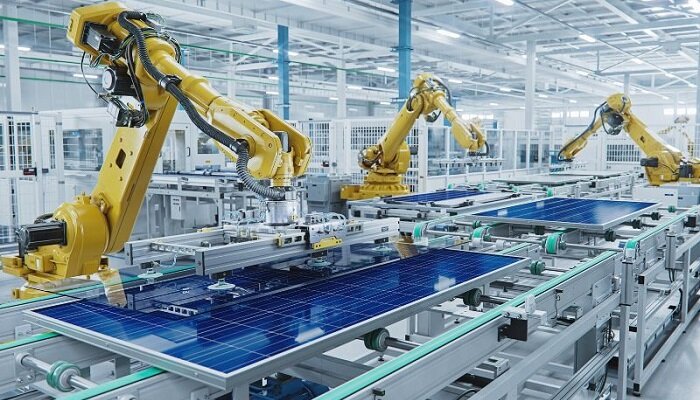A new era of U.S. industrial policy has started thanks to three pieces of recent federal legislation: the Infrastructure Investment and Jobs Act- IIJA, the CHIPS and Science Act- CHIPS Act, and the Inflation Reduction Act- IRA. A wide range of industrial as well as manufacturing sectors have been targeted for public support based upon emergent strategic consensus on the requirement for geoeconomic competition with China, rising emphasis on the security of supply chains, and a belief in the wide social benefits of renewed U.S. industrial as well as manufacturing capacity. Already, this new environment is throttling a surge in private sector investment.
Apparently, two sectors happen to stand out. The semiconductor sector has gone on to attract around $200 billion in private investments when it comes to the construction of new or expansion of preexisting fabrication facilities- fabs, while the EV battery sector has gone on to draw around $75 billion in investment announcements ever since Q3 2022. Both are manufactured goods that happen to deliver strategic benefits beyond their market value. Semiconductors, as a matter of fact, are the backbone of almost all modern technology, but U.S. import dependence for this crucial technology has left the US vulnerable to increased national security risks as well as supply chain disruptions, as seen in the automotive industry chip shortage scenario in 2021–2022. EV batteries are indeed the key component in reaching U.S. net-zero emissions goals as well as helping support the U.S. military in both tactical and operational demands. As the U.S. automotive industry looks forward to the transition to electrification, its competitiveness happens to be challenged by low-cost and high-performance EVs from China, where the EV battery supply chain is undoubtedly the most developed. This goes on to create political, economic, as well as security issues.
It is well to be noted that an overlooked but important question is the energy needs of these new industries. Semiconductor fabs as well as battery manufacturing plants go on to need massive volumes of energy, and they happen to directly compete for energy resources alongside various other growing sectors like mineral mining as well as processing, hydrogen production, and also AI data centers.
In ascertaining the energy bill when it comes to this growing strategic manufacturing, a dearth of public as well as contemporary data happens to be a major hurdle. For both fabs along with EV battery manufacturing factories, for instance, there happens to be quite limited public data on energy consumption, and the fact is that the estimations in academic literature vary because of differing methods as well as data sources. What information happens to be available highlights the large amounts of energy that’s necessary when it comes to these critical industries. The first phase of TSMC’s novel semiconductor plant based in Arizona will go on to consume almost 200 MW; however, the planned expansion of this plant could grow so as to consume more than 1 gigawatt- GW of electricity as per the filings for transmission system expansion from Arizona Public Service are concerned. Put in perspective, that is almost equivalent to the electricity production capacity of the new Vogtle 3 nuclear reactor.
So as to estimate the amount of energy that’s required for EV battery manufacturing, an academic literature review has been conducted and has gone on to average many studies’ estimates, such as Florian Degen et al., Florian Degen as well as Marius Schütte, Q. Dai et al., and also Simon Kurland, thereby finding that there happens to be an average energy requirement of 44 kWh in order to produce 1 kWh of battery capacity. Given that the fresh U.S. battery manufacturing plants average around 23 gigawatt-hours- GWh of capacity production every year, these facilities may as well consume nearly 115 MW. With 45 domestic battery manufacturing plants that have already been announced, the energy consumption of such facilities is around 5,200 MW, or more than 45,000 GWh per year. But the academic studies from which these kinds of numbers come happen to be largely over 10 years old, and hence contemporary energy consumption goes on to differ because of the increased scale of industry and technological enhancements.
It is well to be noted that the U.S. Energy Information Administration surveys manufacturers in order to understand the energy consumption of manufacturing sectors, and the most recent data that’s available is from 2018.
In March, Gina Raimondo, the Secretary of Commerce, announced that U.S. investments will put the country back on track so as to produce roughly 20% of the world’s leading-edge logic chips by the end of 2030, which is indeed quite a dramatic increase given that the country at present produces none. The domestic lithium battery market could go on to grow by, say, another factor of five to ten by 2030 since the Biden administration pursues its target of having 50% of all the new vehicle sales to be electric by 2030.
The fact is that these strategic ambitions throughout both sectors go on to imply an energy system that can go on to deliver surging volumes sans the undue delay, while at the same time also maintaining system-wide affordability and progress in terms of decreasing emissions intensity. Most of the energy demand coming that come from these two industries happens to be in the form of electricity, which figures into a much broader nationwide electricity demand growth challenge. Delivering additional generation resources as well as transmission system investments so as to meet such kind of electricity demand growth happens to be a prominent policy challenge, but one that mostly happens to sit at the state level.
When it comes to the federal level, neither the IRA nor the CHIPS Act impose energy usage or emissions intensity requirements for tax credit eligibility on such sectors, though the latter law strongly encourages the usage of renewable energy. For instance, renewable energy usage plans get included in the environmental questionnaires for both commercial fabrication facilities as well as the Facilities for Semiconductor Materials and Manufacturing Equipment guidance. This happens to be stand in a stark contrast to the stringent requirements that are imposed by Treasury Department guidance on electricity usage by the IRA-supported green hydrogen sector. Although achievable, these requirements undoubtably happen to impose additional direct financial as well as time expenditures on projects as well as industry expansion.
Given the country’s abundant supply when it comes to affordable natural gas as well as deep delivery networks, a manufacturing expansion interestingly implies a significant role for natural gas–fired electricity generation. Natural gas happened to offer 43% of the energy consumed within the power sector across the country in 2023, although this figure varies prominently on a state-by-state basis. As states as well as utilities look forward to meeting fast-expanding electricity demand, transmission constraints as well as resource availability limit wind along with solar expansion, continued cost and execution risk limit choices in the nuclear sector, and the ongoing requirement for firm dispatchable capacity most often than not goes on to leave system planners with less viable choices beyond the expansion of the gas-fired generation fleet.
When we talk outside of the electricity sector, direct natural gas by industry, representing almost 32% of the overall U.S. gas consumption, is crucial for applications like onsite generation, process heat, and feedstock. For instance, direct usage of natural gas happens to play a large role when it comes to battery manufacturing in order to provide the high temperatures required for the drying solvent used within the electrode manufacturing process and also for the drying rooms that are crucial for cell assembly. Studies on the relationship between booms in U.S. energy production as well as manufacturing suggest that the effect of U.S. natural gas prices, even in comparison to pre-2022 European gas prices, happens to be small but positive. But in the context of a new supportive policy environment for industry, the major availability and affordability of natural gas are most likely to be key enablers and offer a competitive edge in both the global commercial as well as the global strategic landscape.
The point is that the strategic manufacturing sectors should go ahead and prioritize collecting as well as sharing more energy data, both qualitatively as well as quantitatively, since this data will be key to aiding their own success. A better understanding when it comes to energy usage estimates as well as their economic implications can even put local governments, utilities, and energy regulators in a position to plan for meeting regulatory as well as infrastructure needs while at the same time reducing the potential strains on the power capacity. It would also help future energy system investments as well as policymaking as the nation looks forward to seizing on unprecedented investment progress and what it can mean for the U.S. leadership both economically and strategically for the upcoming decades.





































